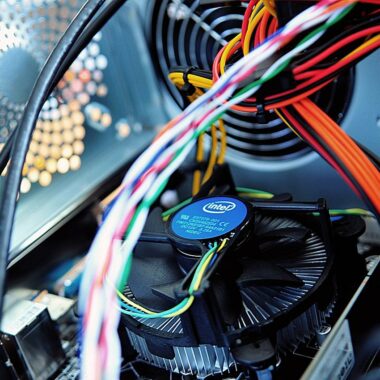FPGA stands for Field-Programmable Gate Array. It is a type of integrated circuit (IC) that can be configured by the user after manufacturing, in contrast to Application-Specific Integrated Circuits (ASICs) which are designed for a specific purpose. FPGAs can be reprogrammed to perform different functions and adapt to changing requirements, making them highly flexible and useful in a wide range of applications.
FPGAs consist of an array of programmable logic blocks and programmable interconnects. The logic blocks can be configured to perform specific logic functions, such as AND, OR, and NOT gates, and the interconnects can be used to connect the logic blocks together in different ways. This allows the FPGA to be configured to perform a wide variety of digital functions, such as signal processing, control, and communication.
FPGAs are widely used in industries such as telecommunications, industrial automation, aerospace and defense, and in fields like machine learning, computer vision, and internet of things (IoT). They are also used in the development of high-performance computing systems, such as supercomputers, and in the design of custom digital circuits for specific applications.
FPGA Chips
Field-Programmable Gate Arrays (FPGAs) are a type of integrated circuit that have gained significant popularity in recent years. These chips are highly versatile and can be configured to perform a wide range of digital functions, making them useful in a variety of applications.
FPGAs consist of an array of programmable logic blocks and programmable interconnects. The logic blocks can be configured to perform specific logic functions, such as AND, OR, and NOT gates, while the interconnects are used to connect the logic blocks together in different ways. This allows the FPGA to be configured to perform a wide variety of digital functions, such as signal processing, control, and communication.
One of the key advantages of FPGAs is their flexibility. Unlike Application-Specific Integrated Circuits (ASICs), which are designed for a specific purpose, FPGAs can be reprogrammed to perform different functions and adapt to changing requirements. This makes them ideal for use in applications where the requirements may change over time, such as telecommunications, industrial automation, and aerospace and defense.
FPGAs are also increasingly being used in the development of high-performance computing systems, such as supercomputers. They can be used to design custom digital circuits for specific applications, such as machine learning, computer vision, and internet of things (IoT). Additionally, FPGAs are widely used in fields like digital signal processing, video processing, and networking.
Another advantage of FPGAs is their high performance. They can be used to implement complex digital circuits with very high speed and low power consumption. This makes them ideal for use in applications where power consumption and performance are critical, such as in mobile devices, embedded systems, and aerospace applications.
FPGA chips have become an essential tool in the design and development of a wide variety of electronic systems. Their flexibility, high performance, and low power consumption make them ideal for use in a wide range of applications. As technology continues to evolve, it is expected that FPGAs will continue to play an increasingly important role in the design of electronic systems.












